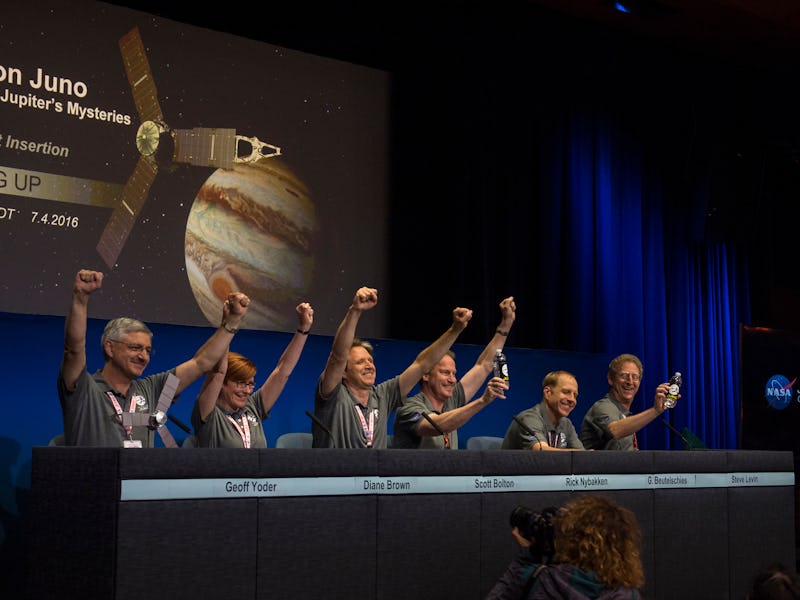How NASA Throws a Ballin’ News Conference
Sometimes, modesty pays off.

The world’s biggest space agency doesn’t necessarily revel in its own hype, but it knows how to take advantage of its clout to propel news forward in exciting ways. Space enthusiasts — casual or hardcore — can measure each year by punctuating the major NASA announcements over the course of a 12-month cycle.
As Allard Beutel, the news chief for NASA’s Public Affairs Office, tells it, the case study of NASA’s stellar PR strategy can be encapsulated in its announcement of the discovery of seven potentially habitable planets in the TRAPPIST-1 star system about 40 light-years away from Earth. The February 22 reveal required months of planning. “Truth be told, it was much bigger than we ever expected,” Beutel tells Inverse.
Beutel and his colleagues were given the heads up about the TRAPPIST findings months ahead of time. They knew of the paper being evaluated by a peer-reviewed journal; after getting in touch with the researchers who made the discovery, they knew it necessitated its own news conference.
“News conferences are one of the most efficient ways to tell the story all at once,” says Beutel. Every important member of the investigation is brought in, preferably in person. The press can ask questions right then and there, over phone or in person, and the introduction of social media has allowed the public to become involved and ask their own questions as well.
The TRAPPIST announcement also experimented with a successful NASA-sponsored Reddit AMA. The agency seems to be encouraged by the dialogue generated by events and expanding their social outreach. “It’s something that allows the public to do more of a back-and-forth directly with our scientists and engineers,” said Beutel.
It’s not just a social media and hashtag dump; visuals have increased in importance. For the TRAPPIST discovery, Beutel and his team cultivated special charts and diagrams to help describe the size of the planets, the distances from the host star, and — most palatably — illustrate the extent to which they were potentially habitable.
Beutel says some of the biggest work that goes into pulling off these conferences is getting the scientists and engineers ready to answer questions. “They know the science cold,” he says; it’s just a matter of “trying to get them to explain it to the widest possible audience.”
Of course, there are many news conferences the agency pulls together in just a matter of days. The preparation for those events is “largely the same,” says Beutel — and the reason for even holding a conference is because it’s clear upfront that there are going to be an overflow of questions and interest.
What works against NASA’s staged excitement is the fact that they flicker before the public tires of their newsworthiness and moves on to the next thing. “Not everyone is getting their news and information from one source anymore,” says Beutel. “We’re seeing less and less beat reporters. People are going to more and more places — be they news sites, blogs, social media accounts — to understand the story. There is no such thing as one-stop shopping for news.”
To that end, NASA is working on more novel ways of blowing up their presence on the internet — strikingly prominent as it is. The agency is kicking off Facebook live streams, Snapchat stories, streaming more news conferences on NASA TV or on its website, and taking part in more real-world events.
Some things, of course, are still classic, tried-and-true solutions. Beutel still loves when news conferences use physical objects to explain what an upcoming mission will look like. “I’m a big fan of show-and-tell,” he says. “It works when you’re in kindergarten, and it works when you’re an adult. It really does!”
“We absolutely do not want to be clickbait and overhype something,” Beutel continues, insisting on protecting scientific integrity above all else. “We often are doing the opposite of what a public relations firm would do. We sometimes get accused of being dry, and I understand why.” But he says the agency’s overall desire is to “turn down the noise while turning up the signal.”
And that’s sometimes all that’s needed to tell a story.